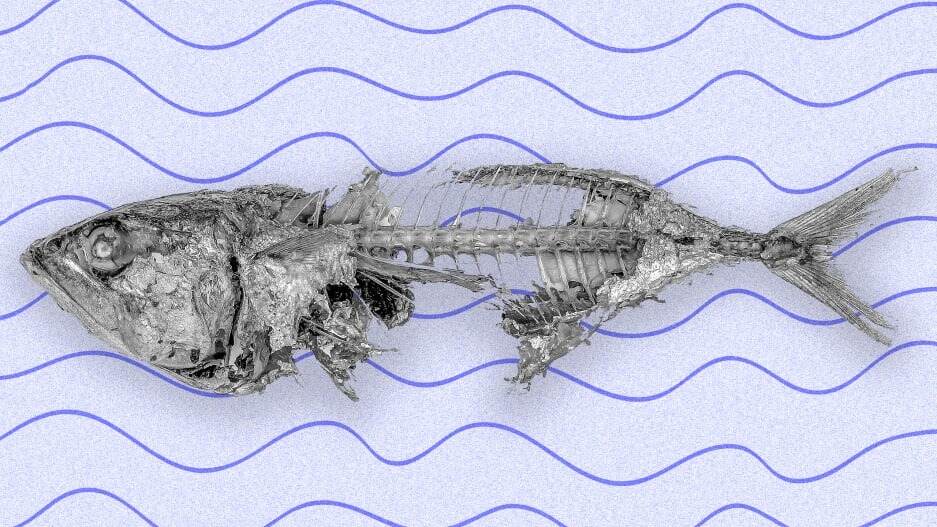- | 8:00 am
From energy drinks to skin grafts: How Iceland uses 90% of its fish waste
By using fish skin, scales, bones, and heads to make new products, Iceland is generating more revenue from a smaller volume of caught cod.

For centuries, cod has been emblematic to Iceland. There’s a cod engraved on the back of its 1 króna coin. A flattened, headless cod was once on the Icelandic Coat of Arms. The country engaged in the so-called Cod Wars with Britain for centuries over rights to fish cod in the North Atlantic.
To preserve such an important source of food and export, a network of companies in Iceland is working to ensure that all the country’s cod is used to its full value—turning each and every part of the fish into products as diverse as jerky, health drinks, bandages, bags, and human skin grafts. Thanks to the work, Iceland is currently using 90% of its cod. But the partnership is striving for 100%.
The economy of such a small island has relied heavily on fishing since settlement in the ninth century. Quite simply: “Cod was money,” says Alexandra Leeper, international managing director for Iceland Ocean Cluster. It still is: In 2022, Iceland’s fishing industry caught more than 200,000 metric tons of cod, plus tens of thousands more of herring, haddock, and halibut. Iceland has an “island mentality,” Leeper says; it has had to embrace a circular economy due to limited resources—especially since the 1980s, when the government adopted a quota system on catch limits in order to sustain cod stocks.
Iceland Ocean Cluster—established in 2011 and sometimes known as the Silicon Valley of whitefish— is a network of 65 companies and organizations working in the blue economy. The companies are all physically housed at the Cluster’s offices in Reykjavik Harbor for maximum collaboration with one another. Some are startups; others are legacy outfits such as Marel, a multinational food processing company.
For Island Ocean Cluster’s signature project, 100% Fish, many of its member companies have come together to find innovative ways to use the entirety of a fish. That includes the skin, head, bones, and scales, in products such as cod liver oils; roe and milt; fish leather; creams and cosmetics from enzymes; collagen supplements; dog snacks; and cold medicine sprays.
In the past, when companies were using just 50% to 55% of the fish, the offal, deemed of little use, would have been immediately thrown overboard or taken to landfills, contributing to global warming. Today, the Cluster companies’ work means that combined fishing exports are 25% of Iceland’s gross domestic product (if you count just fish alone, it’s 8.1%). They’re also doing more with less: With the quota system, annual catch is down by 45% since 1981, but the total export value has increased more than 100%.
Some new uses take relatively little innovation, such as exporting fish heads. Companies like Curio and Mesa work to split and process heads; others work to dry them with geothermal heat before they’re traded in markets like Nigeria, where they’re often used as the base of soups and stews. “There’s not a fish head food culture [here],” Leeper says, but there are in parts of the world.”
Other uses require more R&D. One startup, Kerecis, is doing skin grafts with cod skin for people with burns. It just sold for $1.3 billion to a Danish medical device company. Other companies process fish meal and liver, separate roe, and work on skinning and mincing.
There’s also innovation happening with other sea life. Ordinarily shrimp shells are discarded, but one company is now extracting chitosan from those shells; it’s a bioactive compound that triggers the human immune system to work harder. The company, Primex, is using it in weight-management supplements, skincare products, and even a water clarifier for swimming pools and hot tubs.
Leeper says there’s been a greater acceptance and willingness among Icelanders to try such products, especially those that are ingested. One company makes a popular sugar-free energy drink, Collab, containing 6 grams of fish collagen. The drink comes in flavors like Forest Berries and Ginger and Peach, and Leeper claims there’s no fishy taste. “I’ve never seen anyone recoil from it,” she says.
As fish become more scarce due to overfishing around the world, the Cluster is expanding its 100% Fish work in other places. The Cluster has worked with the Great Lakes and St. Lawrence Governors and Premiers for three years now, to increase usage of species like the lake whitefish, a salmon family member and the biggest freshwater fish in Canada.
As for the 10% of the cod that currently gets tossed? That’s mainly the blood and eyes. While the cluster is working hard to find options, the challenge is coming up with processes that are economically feasible. “It’s very quick, easy, and standard to remove the head of a fish,” Leeper says. “But pulling out the eyes is more complicated [and] more time consuming.”








































